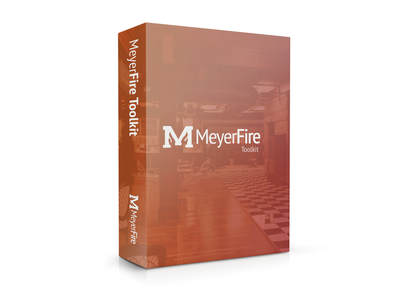|
A project I'm on has a lobby area with a 35-foot tall ceiling next to the elevator door.
NFPA 72-2010/2013 Section 17.7.3.1.3 and 17.7.3.1.4 allows a smoke detector within 60-inches of the top of each elevator door to protect the opening. This can be used for elevator recall. In addition to this smoke detector, do I also need one at the ceiling (35-feet) for normal coverage? Sent in anonymously for discussion. Click Title to View | Submit Your Question | Subscribe
6 Comments
Alex Riley
9/21/2021 07:28:23 am
Hi Anonymous,
Reply
schulman
9/21/2021 08:10:06 am
I agree with Alex but not based on the code.
Reply
DL
9/21/2021 08:28:50 am
NFPA 72:17.4.7
Reply
In the early days of elevator recall it was not uncommon to install the smokes just above the elevator door opening as the idea was to protect the elevator shaft from ingesting smoke if it were to open in a smoke filled lobby. While more detectors might be better for finding smoke in a lobby, it doesn't help the function of the elevator lobby detector.
Reply
12/23/2021 01:26:31 am
Thank you for sharing this information. This is very useful.
Reply
Jason Lupa, PE
8/24/2022 10:18:11 am
For lobby ceiling configurations exceeding 15 ft in height or that are other than flat and smooth, detector locations are determined per NFPA 72 Chapter 17. The detector should be within 60" of the top of each elevator door opening to protect the opening, typically mounted on the wall. This is allowed because it is not being used for general detection, but rather, for the protection of the opening.
Reply
Leave a Reply. |
ALL-ACCESSSUBSCRIBESubscribe and learn something new each day:
COMMUNITYTop June '24 Contributors
YOUR POSTPE EXAMGet 100 Days of Free Sample Questions right to you!
FILTERS
All
ARCHIVES
July 2024
PE PREP SERIES |
MeyerFire
- Blog
- Forum
-
THE TOOLKIT
- SUBMIT AN IDEA
- BACKFLOW DATABASE*
- CLEAN AGENT ESTIMATOR*
- CLOUD CEILING CALCULATOR
- DOMESTIC DEMAND*
- FIRE FLOW CALCULATOR*
- FIRE PUMP ANALYZER*
- FIRE PUMP DATABASE*
- FRICTION LOSS CALCULATOR
- HANGER SPACER*
- IBC TRANSLATOR*
- K-FACTOR SELECTOR*
- NFPA 13 EDITION TRANSLATOR ('19 ONLY)
- NFPA 13 EDITION TRANSLATOR ('99-'22)*
- LIQUIDS ANALYZER*
- OBSTRUCTION CALCULATOR
- OBSTRUCTIONS AGAINST WALL*
- PITOT CONVERTER
- PLUMBING FIXTURE COUNTS
- QUICK RESPONSE AREA REDUCTION
- REMOTE AREA ANALYZER*
- SPRINKLER DATABASE*
- SPRINKLER FLOW*
- SYSTEM ESTIMATOR*
- TEST & DRAIN CALCULATOR
- THRUST BLOCK CALCULATOR
- TRAPEZE CALCULATOR
- UNIT CONVERTER
- VOLUME & COMPRESSOR CALCULATOR
- WATER STORAGE*
- WATER SUPPLY (US)
- WATER SUPPLY (METRIC)
- UNIVERSITY
- PE Exam
- LOGIN
- PRICING
- OUR CAUSE

MeyerFire.com is a startup community built to help fire protection professionals shine.
Our goal is to improve fire protection practices worldwide. We promote the industry by creating helpful tools and resources, and by bringing together industry professionals to share their expertise.
MeyerFire, LLC is a NICET Recognized Training Provider and International Code Council Preferred Education Provider.
All text, images, and media Copyright © 2016-2024 MeyerFire, LLC
We respect your privacy and personal data. See our Privacy Policy and Terms of Service. The views, opinions, and information found on this site represent solely the author and do not represent the opinions of any other party, nor does the presented material assume responsibility for its use. Fire protection and life safety systems constitute a critical component for public health and safety and you should consult with a licensed professional for proper design and code adherence.
Discussions are solely for the purpose of peer review and the exchange of ideas. All comments are reviewed. Comments which do not contribute, are not relevant, are spam, or are disrespectful in nature may be removed. Information presented and opinions expressed should not be relied upon as a replacement for consulting services. Some (not all) outbound links on this website, such as Amazon links, are affiliate-based where we receive a small commission for orders placed elsewhere.













 RSS Feed
RSS Feed
